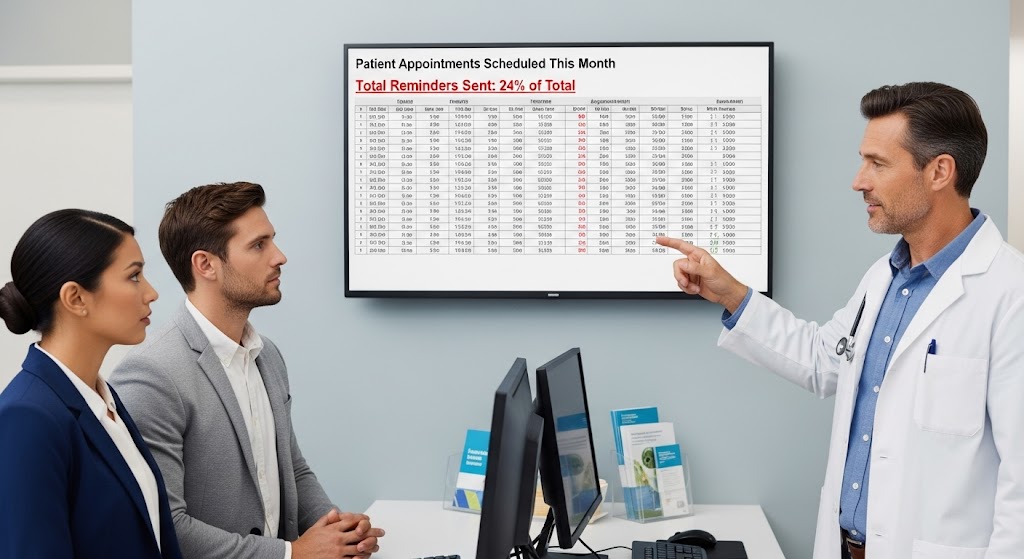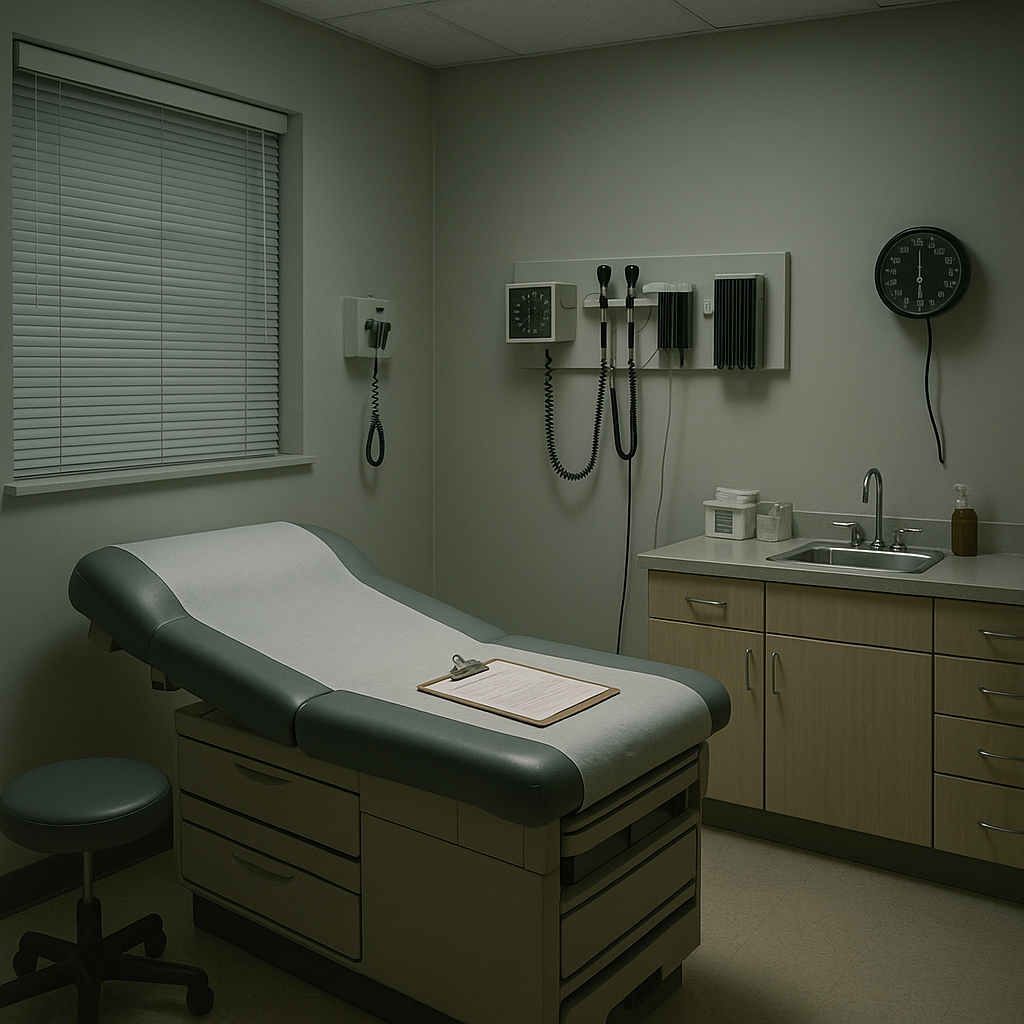20+ Proven Ways on How to Remind Patients of Appointments
Missed appointments are a significant drain on resources, revenue, and operational efficiency for healthcare practices. Understanding how to remind...
6 min read
Gregory Vic Dela Cruz : 8/27/25 10:00 AM

For many modern clinics, patient no-shows are a persistent drain on revenue, productivity, and care continuity. On average, outpatient practices lose 18–30% of appointments to missed visits, adding up to thousands of dollars in lost revenue every month. But here’s the overlooked truth: many of these no-shows are preventable with better communication.
In this blog, we'll endeavor to solve your clinic's patient attendance issues by:
You'll also find a free checklist which you can implement starting today and see positive outcomes within weeks.
How should modern clinics handle appointment reminders? Instead of a one-size-fits-all message, a patient coming for a telehealth visit gets a secure link, while another scheduled for a fasting lab receives prep instructions in advance. Staff no longer spend hours making calls, patients get the right message at the right time, and the clinic sees fewer empty chairs.
This combination—reminders plus EMR data—is the proven way to drive better attendance and happier patients. Read on to learn exactly how this works.
Even the best providers can’t deliver care when patients don’t show up. No-shows disrupt the schedule, waste staff time, and hurt both patient outcomes and clinic revenue. Yet many clinics still rely on outdated methods to address the issue: manual calls, generic texts, or automated robocalls. These approaches miss the mark because they fail to address the real causes of patient no-shows. Let’s dig deeper into why attendance remains such a stubborn problem.
Life is busy, and healthcare isn’t always at the top of the list. Patients juggling work, family, and other responsibilities often forget appointments scheduled weeks in advance. Generic reminders don’t solve this because they often come too early, too late, or lack a clear call-to-action. Without timely, actionable prompts, forgetfulness turns into missed care.
Specialty appointments often require preparation: fasting, stopping medications, or bringing paperwork. When instructions are only given verbally or buried in paperwork, patients either show up unprepared or cancel last minute. A one-size-fits-all reminder like “You have an appointment tomorrow” does little to prevent these failures. Without EMR-linked reminders, patients don’t get the specific prep information they need to attend confidently.
When conflicts arise, patients need fast ways to reschedule. If their only option is calling during office hours and waiting on hold, many skip the appointment instead. Clinics without two-way reminders lose visibility—patients cancel quietly or don’t show at all. This barrier directly contributes to attendance problems, especially in communities with transportation or work-related challenges.
Today’s patients prefer texting over phone calls. But even when clinics text, too often the messages are generic: “You have an appointment at 10:00.” Without context—location, provider, type of visit—patients may ignore the reminder. Worse, disconnected systems sometimes send incorrect information when schedules change. That erodes trust in the practice and discourages attendance.
Front-desk teams often spend hours calling patients. Even if they reach them, documenting confirmations manually is inefficient. The cycle burns staff time without solving the root issue. Staff frustration grows, turnover risk increases, and patients still miss visits. The problem isn’t effort—it’s workflow design.
No-shows and late cancellations affect more than revenue. They disrupt provider schedules, delay care, and create inequity when patients who want appointments can’t get them. Meanwhile, overworked staff spend energy chasing patients instead of delivering service. Patient satisfaction suffers, and reputation takes a hit as frustrated patients leave negative reviews or switch providers.
Generic reminders and disconnected workflows don’t solve attendance problems. To truly improve, clinics need reminders that are accurate, actionable, and directly linked to EMR data.
When reminders connect directly to the EMR, they pull live schedule data. This eliminates errors like reminders for canceled or rescheduled visits. Patients receive accurate details—date, time, provider, and location—every time. Trust in reminders increases because patients know they’re reliable.
Generic messages say “You have an appointment.” Integrated reminders say: “You have a cardiology appointment with Dr. Lee on Tuesday at 10:00 AM. Please bring your insurance card and recent test results.” This level of personalization, powered by EMR data, makes reminders relevant. Patients feel cared for, and compliance improves.
Prep instructions linked to appointment type are a game-changer. Imaging patients receive fasting reminders. Telehealth patients get secure links 15 minutes before their visit. Pediatric visits include guardian consent forms. This reduces same-day cancellations and ensures patients arrive ready.
Integrated reminders aren’t just notifications—they’re conversations. Patients can confirm, cancel, or reschedule by text. Staff see responses instantly in a shared inbox. This closes the loop, helping staff backfill open slots quickly. No more voicemails piling up, no more guessing about attendance.
When patients handle confirmations by text, call volume drops. Clinics report cutting phone traffic by 40–50% after implementing integrated reminders. That gives staff hours back each week to focus on patient service, billing, or follow-up care.
EMR-integrated systems allow clinics to track metrics: confirmation rates, no-show rates by appointment type, average confirmation time, and cancellation patterns. This data helps practices refine reminder cadence, optimize staff scheduling, and predict where attendance risks are highest.
One multi-specialty clinic reduced no-shows from 22% to under 8% within two months of implementing EMR-integrated reminders. Another practice reported a 50% reduction in daily calls, with patients praising the convenience of texting. A family medicine group gained over 100 five-star Google reviews in 90 days simply by tying review requests to post-visit reminders.
Patients notice when reminders are accurate, personalized, and easy to act on. They feel respected and cared for. Attendance becomes less about obligation and more about engagement. That translates into loyalty, positive reviews, and more referrals.
The combination of reminders plus EMR data turns attendance into a predictable outcome, not a gamble. Clinics win back revenue, staff gain time, and patients receive better care.
Want to enhance your appointment reminder system today? Use the following checklist that summarizes everything you need to do.
Implement these steps to reduce no-shows, improve patient attendance, and free staff from manual calls.
Curogram makes better attendance achievable with HIPAA-compliant, two-way texting integrated directly into your EMR. Here’s how it solves attendance challenges:
Clinics using Curogram consistently report fewer no-shows (up to 75% reduction), fewer phone calls (40–50% drop), and higher patient satisfaction. Testimonials highlight how the platform feels intuitive and saves staff hours daily. Curogram turns reminders from generic alerts into revenue-saving, experience-building tools by combining them with EMR data.
No-shows don’t have to be the cost of doing business. With reminders powered by EMR data, clinics can transform attendance into a predictable, reliable metric. Patients receive accurate, personalized messages they can act on, staff reclaim hours lost to phone calls, and providers see fuller schedules.
Curogram delivers this with HIPAA-compliant, two-way reminders that sync with your EMR. From prep instructions to rescheduling, it automates the journey from booking to attendance. The result: fewer no-shows, higher satisfaction, and stronger revenue.
Ready to see better attendance at your clinic? Book your free demo today and discover how reminders plus EMR data can revolutionize your scheduling.
While there is a range of available tools built for that purpose, only Curogram offers a comprehensive HIPAA-compliant communication platform that can integrate with almost any EMR system.

Missed appointments are a significant drain on resources, revenue, and operational efficiency for healthcare practices. Understanding how to remind...

An appointment reminder service for doctors is the single most effective tool for tackling one of the most persistent and costly problems in...

An appointment reminder email template is a pre-designed, reusable message that you can quickly customize and automatically send to your clients to...